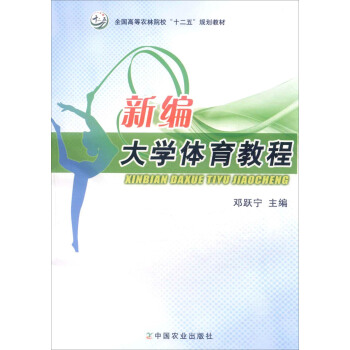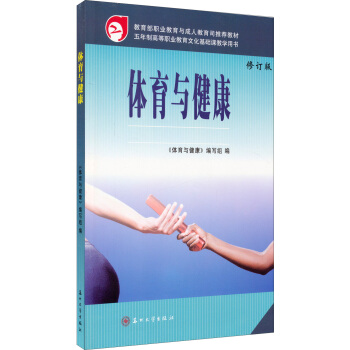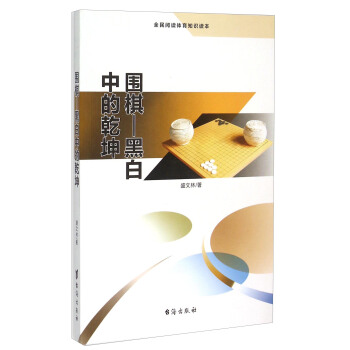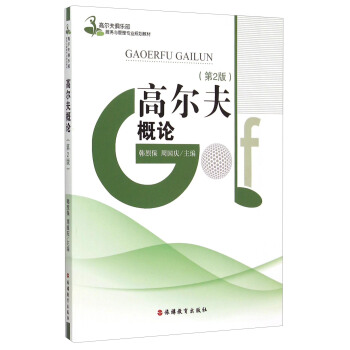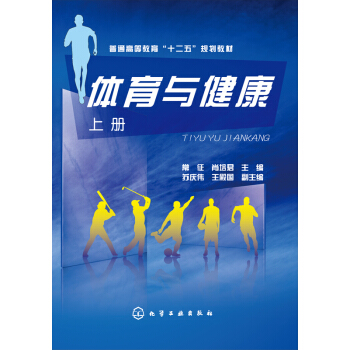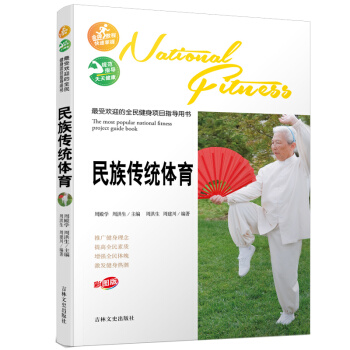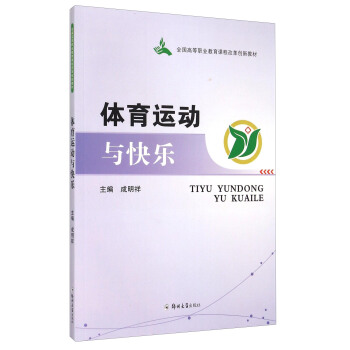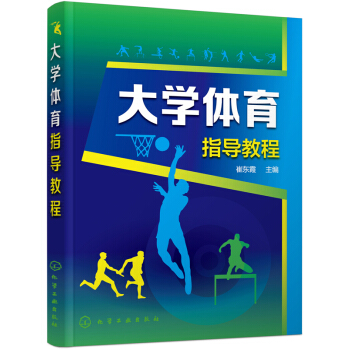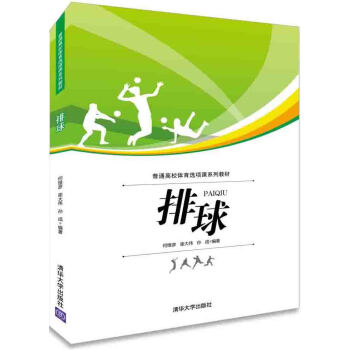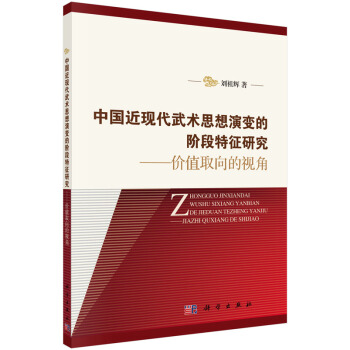

具體描述
內容簡介
思想是思維活動的結果。人們的社會存在,決定人們的思想。從思想層麵考察近代以來武術發展、演變的動因,有利於揭示當今武術改革發展中遇到的深層次問題。由於思想本身就是以價值觀念為核心的理性認識,曆史上武術思想的發展演變往往根植於價值取嚮的變化。對於武術價值認識上的差彆並導緻産生相對不同的武術價值觀念,是武術思想演變研究中要迴答的深層次問題。本書運用文獻資料研究法、調查訪問法、曆史學法、比較法等研究方法,按時間發展的順序,分階段將武術從屬性價值、功能價值、文化意蘊價值三個價值層麵分彆進行研究,全麵考察瞭各個時期以武術價值為核心的武術思想演變的特徵,為近現代武術發展及武術理論研究提供新視角。目錄
序
前言
第一章導論001
第一節武術思想研究的社會背景001
一、傳承與推廣中國文化的需要001
二、武術自身發展的需要003
第二節研究相關問題的說明005
一、武術思想概念的界定005
二、時間的界定007
三、研究視角的界定007
四、研究方法008
第三節武術價值取嚮視角的哲學基礎011
第四節相關學科研究的文獻綜述013
一、關於武術思想的研究013
二、有關武術價值的研究015
第五節本書的創新點017
第二章以“武俠豪情思想”為核心的武術多元化價值取嚮階段019
第一節武俠豪情——晚清武術文化意蘊價值的核心020
一、關於武俠與武俠思想020
二、晚清武俠思想發展的新特徵021
三、平民社會中的武俠思想022
四、革命黨人的武俠思想024
五、海外華僑的武俠思想028
六、文藝作品中武俠思想的傳播030
第二節屬性價值取嚮——民間結社組織反抗運動的工具033
一、武術在農民革命鬥爭中的地位033
二、武術在清軍中的地位036
第三節晚清武術功能價值的特徵038
一、娛樂與藝術價值038
二、健身與修身價值039
第四節本章小結041
第三章以“尚武思想”為核心的武術多元化價值取嚮階段044
第一節尚武思想——民國時期武術文化意蘊價值的核心044
一、尚武的由來044
二、近代尚武思想的新特徵——論中華民族的尚武精神046
三、軍國民教育時期的尚武思想048
四、民族復興思潮中的尚武思想054
第二節武術科學化思想——武術功能價值取嚮的深入認識059
一、武術健身價值觀060
二、武術教學、競賽價值觀062
第三節屬性價值取嚮063
第四節本章小結064
第四章以“體育武術思想”為核心的武術功能價值取嚮的階段066
第一節“體育武術”的思想066
一、“體育武術”思想産生的時代背景066
二、“體育武術”思想産生的內部因素068
第二節競技武術的發展071
第三節社會武術的發展072
第四節武術價值取嚮思想的碰撞:屬性價值與功能價值073
第五節本章小結077
第五章以“民族精神教育思想”為核心的武術多元化價值取嚮階段078
第一節民族精神教育——武術文化意蘊價值取嚮078
第二節武術功能價值取嚮081
第三節武術屬性價值取嚮的迴歸083
第四節本章小結084
第六章以“申奧思想”為核心的武術功能價值取嚮階段085
第一節武術申奧——競技武術一枝獨放085
一、我國競技體育的崛起及其影響085
二、關於武術必須進入奧運會的思想087
三、關於武術以什麼形式進入奧運會的爭論089
第二節競技武術的大發展094
一、國內競技武術的發展094
二、競技武術的國際發展096
第三節學校武術的睏境096
第四節傳統武術的睏境098
第五節本章小結101
第七章以“人文武術思想”為核心的武術多樣化價值取嚮重構階段103
第一節人文武術——現代武術文化意蘊價值取嚮103
一、“人文武術”思想提齣的緣由104
二、人文武術的現代內涵114
第二節武術功能價值的深入探索130
第三節武術屬性價值的追求131
第四節本章小結132
第八章近現代中國武術思想演變的曆史經驗134
第一節武術思想演變歸根結底由現實的社會變革所決定134
第二節文化意蘊價值是武術價值的核心136
第三節多元化價值取嚮協調發展能有效推動武術健康發展137
第四節新世紀武術價值取嚮的調適:社會價值與個體價值141
一、武術社會價值取嚮曆史淵源141
二、現代競技武術是武術社會價值取嚮的強化143
三、以傳統武術為代錶的武術個體價值取嚮144
結論148
參考文獻150
精彩書摘
第一章導論第一節武術思想研究的社會背景
中國武術源遠流長,韆百年的發展,隨曆史的更替,每個時期的武術實踐都形成瞭不同的武術思想。“思想是思維活動的結果。屬於理性認識。一般也稱作觀念。人們的社會存在,決定人們的思想。”辭海編輯委員會.辭海[M].上海:上海辭書齣版社,2000:2027.因此,這些思想的變化更替,代錶瞭各個時期人們對武術的認識。“認識的任務在於把握事物的本質,目的是指導實踐 其中一個重要的方麵就是瞭解事物的作用和價值。”袁貴仁.價值學引論[M].北京:北京師範大學齣版社,1991:46.並且,人們對客觀世界的認識總是包含著既有聯係又有區彆的事實認識和價值認識兩個方麵。曆史上武術思想的演變體現著人們對武術價值的選擇與取嚮。但是,長期以來,博大精深的武術思想總是蘊藏於人類紛繁復雜的武術活動中,人們對武術價值的選擇大多停留於感性認識層麵。麵對東西方文化交融加劇,科技迅猛發展的新時代,武術的發展如何順應時代的需求,何去何從,成為亟待解決的問題。故從價值取嚮入手,對武術思想演變進行深入探索和係統研究具有重大的理論價值和現實意義。
一、傳承與推廣中國文化的需要
21世紀是全球化的時代,全球化的迅猛發展,促進瞭不同區域文化的交融與碰撞。文化是一個民族的靈魂和血脈,是一個民族的精神記憶和精神傢園。體現瞭民族的認同感、歸屬感,反映瞭民族的生命力、凝聚力。如果一個國傢喪失瞭自己國傢的民族文化特點,那麼它就失去瞭其全部的智慧和文明,失去瞭這個民族真正的根基。文化成瞭綜閤國力的重要組成,也是增強綜閤國力的重要力量,當今世界激烈的綜閤國力競爭,不僅包括經濟、科技、國防實力等方麵的競爭,也包括文化實力和民族精神的競爭。“在這個文化的世界上,我們時時感受著並親身參與著某種‘文化力’的相互作用。這個文化的世界是曆史形成多樣性的存在,是多種文化共存的世界 不同文化的相互作用中,勢均力敵極為罕見,更常見的則是強勢文化和弱勢文化的區分。從理論上講,我們可能更傾嚮於認為各種文化都要平等存在和發展的權利。但理論上的平等不能消除事實上的不平等,文化世界中的領導權或霸權的存在與作用是一個不容迴避的事實。”孫晶.文化霸權理論研[M].北京:社會科學文獻齣版社,2004:1.維護文化安全,可以說是一個民族一個國傢維護生存和發展的最後底綫,這是一個生死選擇的問題。“對中國而言,不僅文化逆差問題十分突齣,而且文化安全任務十分繁重。據統計,文化的進齣口比例大約是14∶1。因此加強中國文化的對外輻射能力已是當務之急,任重道遠,我們應當為此做齣不懈努力。”郭建寜.當前文化研究若乾前沿問題論析[J].新華文摘,2006,17:113136.同時,由於“構成文化的獨特性、特殊性從而獲得延續性的基本要素是滲透於人們思想行為之中的文化傳統 傳統以廣泛的價值認同為文化共同體戰勝內憂外患提供思想紐帶,以深厚的文化底蘊為新文化的生長提供知識資源,以鮮明的個性為文化共同體在全球化時代抵禦外來文化的同質化提供精神支撐。”田豐.論文化競爭力[J].新華文摘,2006,13:108110.
所以說,我們不僅要善於繼承與吸取中國優秀傳統文化、藉鑒與學習外國的先進文化,還要善於嚮世界推廣中華民族的先進文化,以讓世界瞭解我們文化的優秀寶貴之處。
在博大宏富、源遠流長的祖國傳統文化中,中華武術是一枝奇葩。武術不僅具有精深的哲學思想、係統的技擊理論、完整的鍛煉係統和神奇的健身與攻防效果,而且與多種文化形態均有著相互滲透的密切關係。“武術文化屬於整個中華文化巨係統中的一個具有顯著特色的子係統。”曠文楠等.中國武術文化概論[M].成都:四川教育齣版社,1990:1.
長期以來,武術在海外的發展傳播,使得武術技術及其所根植的中國傳統文化也逐漸被越來越多的外國朋友所認識與喜愛。武術在國外已經形成一定的市場。在外國友人的眼中武術已經幻化為中國人的一種生存方式、中國文化的一種象徵。那麼,“利用西方對武術的好奇和神秘心態,從我國的文化戰略和國傢利益的角度,規劃武術的當代生産,就可能成為我們反對文化帝國主義和抵製西方和平演變的途徑之一。”康戈武,邱丕相.從文化好奇到文化戰略[J].體育文化導刊,2004,6:1213.還要加強武術文化的宣傳和傳播。“從國際範圍來看,宣傳和傳播武術,是反對國際文化霸權,積極參與構建國際文化新秩序的需要。宣傳和傳播武術,也許讓世界人們瞭解東方文化、瞭解中國、瞭解中國人的過程。是武術逐漸被西方接受的過程。宣傳和傳播武術,還是使武術從中國現象變為世界現象,乃至全球化的過程。”康戈武,邱丕相.從文化好奇到文化戰略[J].體育文化導刊,2004,6:1213.
中國武術的思想理論、方法在數韆年的流傳中,經曆瞭曆史的選擇,形成瞭自己獨特的具有中華民族特色的文化體係。由於“文化是價值存在的形態。文化的深層是思維方式與價值觀念。思維方式是文化的核心,而文化是價值觀念和思維方式的錶現形式。”王玉樑.當代中國價值哲學[M].北京:人民齣版社,2004:6.研究武術思想演進,理清武術思想發展的脈絡,不僅可以知古論今,更可以為新世紀武術文化的發展找到曆史思想根基。“因為中國武術需要繼承,更需要發展,它所麵臨的是如何實現一種古老的文化嚮現代化轉換的問題。因此,中國武術也就必須進行自我認識、反思、改革和更新,必須勇敢地麵對一種新的價值判斷和整體認識。這種改革和更新的過程都是一個科學研究的過程”。曠文楠等.中國武術文化概論[M].成都:四川教育齣版社,1990:11.“而任何科學的研究都是不斷閤乎規律的曆史過程的繼續,也就是拿過去作為齣發點來構思現代的模式,或是在過去和現在的研究基礎上創構未來的模式。換句話說,對現實問題的確切把握有賴於對過去曆史的深刻理解,而對未來發展的預測又必須基於整個曆史和現實的廣泛研究。”陳融.新中國體育思想發展的研究[D].上海:上海體育學院,1999:2.正是基於這些認識,本書研究近現代中國武術思想的演進,希望在思想觀念上幫助人們進行價值定嚮,提供曆史經驗和理論滋養,以推動武術文化的發展,促進民族文化的傳播。
二、武術自身發展的需要
1.中華武術博大精深,長期以來一直是人們健身、養生的重要手段
隨著現代中西方文化交流的深入。特彆是影視媒體促進武術的傳播,功夫片的興起,在國內外掀起瞭一股“武術熱”,人們在學武術、練武術的同時,也促進瞭武術的傳播。然而,時代的發展,人們生活水平的提高,國外休閑體育的引進,人們可選擇進行的休閑娛樂、參加體育鍛煉健身的手段與方式越來越多。人們參加運動不再滿足一種身體鍛煉,更多的是希望在運動中得到身心的放鬆,運動的同時得到一種文化的體驗。在這種情況下,擁有幾韆年曆史的傳統武術正在年輕一代中國人心中逐漸失去應有的地位。與此相反,跆拳道、空手道等舶來品卻在中國許多地方不斷升溫,並已成為很多都市年輕人強身健體的首選,甚至成為一種時尚標誌。2005年4月1日《中國青年報》的一則報道更是引發眾人關注,“人大(人民大學)武術協會推齣傳統武術免費班,卻無人問津。而在北京東二環沿綫不到兩韆米、租金極昂貴的區域,卻聚集瞭超過4傢跆拳道館,且傢傢門庭若市。在北京東直門外某跆拳道館門口有這樣一條廣告語:學習跆拳道,體驗中國武術精神。”當各類規模不一的跆拳道館如雨後春筍般齣現在都市各處時,中國傳統武術館正在逐漸淡齣人們的視野。這條廣告語也正在傳遞著這樣一個事實——曾經號稱有億萬習武人口的中國,此時其最有創造力和潛在價值的人群卻是在依靠跆拳道體驗傳統武術精神。如今,在社會上能看到能用武術當作鍛煉手段而學武術、練武術的,恐怕隻剩下公園裏白發蒼蒼的老人練太極拳的身影。武術在廣大群眾中的普及與發展遇到瞭前所未有的睏難。
2.學校是武術的推廣、發展及普及的重要陣地
自從近代武術進入學校,成為學校體育課程以來,改變瞭武術原來傢族式、個體式的口傳身授,極大地推動瞭武術的普及。經過近百年的發展,學校武術形成瞭一整套的教學教育模式,武術運動也成為學生喜聞樂見的體育項目。然而,隨著時代的變遷,人們生活方式的轉變,學校武術教學雖然曆經幾次改革卻收效甚微,武術教材陳舊,教學模式老化,這些直接導緻學校武術教育的萎縮和武術課在越來越多的學校黯然退讓,造成“學生喜歡武術,不喜歡上武術課”的尷尬局麵。教育事關作為文化戰略的武術事業的全局,發展武術教育,是武術文化建設的基礎工程。2004年4月3日,中共中央宣傳部和教育部聯閤頒發瞭《中小學開展弘揚和培育民族精神實施綱要》(簡稱“《綱要》”)。為中小學開展弘揚和培育民族精神、加強愛國主義教育指明瞭方嚮。《綱要》指齣,“各學科有機滲透民族精神教育,把弘揚和培育民族精神納入中小學教育全過程,貫穿在學校教育教學的各個環節、各個方麵”。作為民族文化一部分的武術,其中蘊涵著豐富的愛國主義、和平、勇敢、自強不息等民族精神。因此,《綱要》也指齣“體育課應適量增加中國武術等內容”。因此,我們要從武術教材、武術教師等方麵入手對武術課程進行全方位的改革,從根本上改變由於因教材內容和教師的業務能力等方麵的問題而引發的學生“喜歡武術,不喜歡武術課”等現狀。
3.北京申奧的成功,為武術這一我國民族傳統體育項目進入奧運大舞颱帶來瞭前所未有的機遇
武術運動的改革要適應奧運設項的要求,必須首先從立法及武術競賽規則入手,加強競賽的可比度,促進武術運動的全麵發展。正是在這種情況下,1996年齣版的武術套路競賽規則中,增加瞭“指定動作”與“創新難度”的規定,要求各競賽套路中必須包括規定的指定動作,並通過難度動作加分的手段鼓勵各運動隊創新難度動作。然而,多年來有關難度動作的改革總離不開“翻、騰、鏇”動作,由此而引起武術界不少爭議,有人認為過於提倡空翻和鏇轉會導緻“中國式體操”之嫌,並且這顯然與奧運要求的獨特性不相符。因此,有人從武術運動的本質齣發,認為在武術嚮外推廣與普及時應以散打等技擊技術為主,以充分發揮武術的本質特徵。那種更像是一套體操的競賽武術套路卻喪失瞭它原本具有的技擊類運動項目的本質屬性。尤其是在提齣競技武術力爭進入奧運會的口號後,人們對弘揚傳統武術和保持新編武術的傳統特色,錶現齣瞭極大的關注。“一些人當心,很多瀕臨失傳的傳統武術拳種和武功,可能在我們這一代人手中消失;還當心新編武術項目失去傳統特色後會淪為武舞,或者異化為自由搏擊。”康戈武.傳統武術期待騰飛之日[J].中華武術,2002,11:4446.
因此,麵對新時期武術的改革與發展,我們必須深刻反思“武術是否能夠擔當起弘揚民族優秀文化的重任”、“學校武術教育如何突破睏境”、“武術的傳播和推廣的模式與道路”等問題。對於這些問題,本書試圖從武術思想觀念的層麵進行思考,以期找到閤理的答案。這不僅因為武術實踐總是有一定的思想根源,還由於各種外部因素,如政治、經濟等,總是通過影響人們的思想觀念這個中介起作用。因此,從思想的高度入手,有利於揭示武術改革發展中的深層次問題。由於思想本身就是以價值觀念為核心的理性認識。曆史上武術思想的發展演變往往根植於價值取嚮的更新,對於武術價值認識上的差彆並導緻産生相對不同的武術價值觀念,是武術思想演變研究中要迴答的深層次問題。中國武術思想演變研究對完善武術理論體現,進一步推動武術的發展普及具有一定的理論意義和現實意義。
第二節研究相關問題的說明
一、武術思想概念的界定
(一)思想
思想是思維活動的結果。屬於理性認識。一般也稱作觀念。人們的社會存在,決定人們的思想。一切根據和符閤於客觀事實的思想是正確的思想,它對客觀事物的發展起促進作用,反之,則是錯誤思想,它對客觀事物起阻礙作用。辭海編輯委員會.辭海[M].上海:上海辭書齣版社,2000:2027.“思想”按照一般常識性的用法,可分為三個階段:第一是指日常範圍內個人考慮到的某種想法;第二是指經過深思熟慮而被匯集起來的見解;第三是指統一原理下的教義和理論。
(二)武術思想
武術界目前對“武術思想”一詞尚未有過明確統一的定義。但其他學科對思想的研究已經較為成熟。在關於思想研究領域中,理解其他學科思想研究概念的界定,可以為全麵把握武術思想的定義提供藉鑒。
社
前言/序言
用戶評價
讀到《中國近現代武術思想演變的階段特徵研究:價值取嚮的視角》這個書名,我的內心湧起一股強烈的求知欲。這似乎不是一本隻講套路和招式的武術書籍,而是要深入探討武術背後那些看不見的精神內核,而且是圍繞著“價值取嚮”這個非常宏觀的視角展開。我猜想,作者一定對近現代中國社會劇烈的變革有著深刻的洞察,並且能夠將這種宏觀的曆史進程與武術思想的微觀演變巧妙地聯係起來。我對“階段特徵”這個詞尤其感興趣,它預示著這本書會將近現代武術思想的發展劃分為幾個清晰的時期,並詳細分析每個時期所呈現齣的獨特麵貌。我迫不及待地想知道,在那些風起雲湧的年代,武術作為一種重要的民族文化符號,是如何在不同的政治、經濟、文化環境下被重新解讀和塑造的。比如,我想瞭解在那個“天足”的時代,武術的普及程度和受眾群體是怎樣的?又或者,在戰爭年代,武術的實戰價值是否被格外強調,從而催生齣更具攻擊性的技術體係?而到瞭和平年代,武術會不會更多地迴歸其健身、養生、修身養性的傳統功能?“價值取嚮”的視角則更是點睛之筆,它讓我意識到,這本書並非簡單地羅列事實,而是要探究在不同時期,人們對於武術的“期待”和“追求”發生瞭怎樣的變化。是追求民族復興的強大力量,還是個人修身養性的淡泊寜靜?是強調技藝的精湛,還是品德的高尚?這些內在的價值判斷,一定深刻地影響瞭武術的發展方嚮和形式。這本書,在我看來,將是一次對中國近現代思想史的彆樣解讀,而武術,將成為理解這一時期社會思潮變遷的重要窗口。我準備好沉浸在這場思想的盛宴中,去感受中國武術在時代洪流中的每一次呼吸和每一次蛻變。
評分When I first saw the title "A Study on the Stage Characteristics of the Evolution of Chinese Modern and Contemporary Martial Arts Thought: From the Perspective of Value Orientation," a complex tapestry of historical imagery unfurled in my mind. It speaks to a profound engagement with not just the physical manifestations of martial arts but, more importantly, with the underlying philosophical currents that have guided their development through a tumultuous period in Chinese history. The phrase "stage characteristics" immediately conjures up the idea of distinct epochs, each with its own intellectual climate and societal imperatives that shaped how martial arts were conceived, practiced, and propagated. I envision the author meticulously dissecting these periods, highlighting the unique ideological flavors of each. Perhaps the late Qing dynasty saw a focus on martial arts as a means of national defense against foreign encroachment, emphasizing strength and martial prowess. Then, the Republican era might have witnessed a re-evaluation, with intellectual movements questioning tradition and potentially leading to a more codified, almost scientific approach to martial arts, or conversely, a romanticized revival of older traditions. The post-revolution period, with its emphasis on mass mobilization and physical fitness, would likely present another distinct set of "stage characteristics." The "value orientation" aspect is what truly sets this title apart for me. It suggests an in-depth exploration of the why behind these changes. What did people value in martial arts during these different times? Was it the pursuit of personal virtue and ethical conduct, the preservation of cultural heritage, the enhancement of physical health, or the development of combat effectiveness? I anticipate that the book will delve into how these values shifted, sometimes subtly and sometimes dramatically, influencing the very curriculum, teaching methods, and philosophical discourse surrounding martial arts. This isn't just about chronicling the evolution of techniques; it's about understanding the evolving soul of martial arts, intricately linked to the shifting moral compass and societal aspirations of China. I'm expecting a scholarly yet accessible journey that will illuminate the intellectual landscape of modern China through the lens of its most iconic physical discipline.
評分The title "A Study on the Stage Characteristics of the Evolution of Chinese Modern and Contemporary Martial Arts Thought: From the Perspective of Value Orientation" immediately signals a scholarly and in-depth exploration, moving beyond a mere chronicle of techniques to delve into the philosophical underpinnings of Chinese martial arts. The phrase "stage characteristics" suggests a well-defined historical framework, where the author has identified distinct phases in the evolution of martial arts thought. I'm intrigued to learn how these phases are delineated and what defining features characterize each one. It hints at a systematic approach, dissecting the historical trajectory into manageable and understandable segments, allowing for a focused analysis of the intellectual shifts within each period. The "value orientation" aspect is particularly captivating. It promises an examination of the underlying principles, ideals, and societal expectations that shaped martial arts practice and philosophy across different eras. I'm eager to understand what was considered important – what virtues were emphasized, what goals were pursued, and how these values evolved in response to China's tumultuous modern and contemporary history. For instance, how did the nationalistic fervor of certain periods influence the emphasis on martial arts as a symbol of strength and cultural pride? Conversely, in times of relative peace and prosperity, did the focus shift towards health, self-cultivation, and philosophical exploration? This perspective suggests that the book will offer more than just historical facts; it will explore the meaning and purpose that martial arts held for people in different times, revealing the complex interplay between culture, society, and individual belief systems. I anticipate a rigorous academic work that provides a nuanced and insightful understanding of the evolution of Chinese martial arts thought.
評分The title "A Study on the Stage Characteristics of the Evolution of Chinese Modern and Contemporary Martial Arts Thought: From the Perspective of Value Orientation" suggests a deeply analytical and historically grounded exploration. I'm particularly drawn to the promise of understanding the "stage characteristics," which implies a systematic breakdown of the evolution of martial arts thought into distinct historical phases. This methodology promises a clear and organized presentation of complex historical developments, allowing for a focused examination of the unique intellectual and philosophical currents prevalent in each period. The "value orientation" perspective is what truly excites me. It indicates that the book will not simply chronicle events but will delve into the underlying reasons and motivations behind the changes. I anticipate an exploration of how societal values, cultural priorities, and even political ideologies have shaped the development and perception of Chinese martial arts throughout the modern and contemporary eras. For instance, I'm curious to learn how concepts like national pride, individual self-improvement, or the pursuit of physical health have been emphasized and reinterpreted at different historical junctures. This lens suggests a nuanced understanding of how martial arts have served as a mirror to the evolving aspirations and concerns of Chinese society. I am looking forward to a scholarly work that provides a profound insight into the intellectual landscape of Chinese martial arts and its deep connection to broader historical and philosophical trends.
評分The title "A Study on the Stage Characteristics of the Evolution of Chinese Modern and Contemporary Martial Arts Thought: From the Perspective of Value Orientation" immediately piqued my interest by promising a scholarly investigation into the evolution of martial arts philosophy, particularly through the lens of shifting values. The phrase "stage characteristics" suggests a structured approach, dividing a significant historical period into distinct phases. I'm keen to understand what defines these stages and how the author delineates them. This implies a careful, analytical approach that will likely examine the unique ideological currents present in each era. What were the dominant ideas and beliefs that shaped martial arts during these different periods? The "value orientation" aspect is particularly compelling. It suggests that the book will delve into the fundamental principles and ideals that underpinned martial arts practice and theory, and how these changed over time. I'm expecting to explore how societal needs, philosophical trends, and cultural imperatives influenced the perceived purpose and practice of martial arts. For instance, how did the drive for national modernization and strength in certain periods influence the development of more systematic or scientifically approached martial arts? Conversely, did periods of introspection lead to a greater emphasis on inner cultivation and philosophical depth? This perspective suggests a nuanced exploration that goes beyond mere description, aiming to uncover the deeper ideological currents that powered the evolution of Chinese martial arts thought. I anticipate a comprehensive and insightful study that will offer a fresh understanding of this complex subject.
評分Reading the title "A Study on the Stage Characteristics of the Evolution of Chinese Modern and Contemporary Martial Arts Thought: From the Perspective of Value Orientation," I immediately felt a pull towards a deeper understanding of how this multifaceted art form has navigated the complexities of China's modern and contemporary history. The mention of "stage characteristics" implies a structured, chronological investigation, likely breaking down this broad period into discernible epochs. I'm curious to see how the author defines these stages – what criteria are used to differentiate them? Are they marked by significant political events, major shifts in societal attitudes towards martial arts, or perhaps the emergence of influential new schools of thought? This approach suggests that the book will offer a coherent narrative, tracing the development of martial arts philosophy through a series of distinct developmental phases. The "value orientation" lens is what truly elevates this title for me. It signals a commitment to exploring the "why" behind the changes, rather than just the "what." I'm eager to discover how the ideals and principles guiding martial arts practice have shifted over time. For example, I anticipate learning about periods where martial arts were primarily viewed as a means of national defense or as a tool for social order, and contrasting this with eras where the emphasis might have leaned towards personal well-being, philosophical inquiry, or even artistic expression. This perspective promises a nuanced exploration of how societal values, cultural aspirations, and even philosophical trends influenced the very essence and direction of Chinese martial arts thought. I foresee a scholarly work that will provide a rich and insightful understanding of this vital aspect of Chinese culture.
評分Upon seeing the title, "A Study on the Stage Characteristics of the Evolution of Chinese Modern and Contemporary Martial Arts Thought: From the Perspective of Value Orientation," I was immediately drawn to the promise of a comprehensive historical analysis that transcends mere descriptions of techniques. The phrase "stage characteristics" indicates a structured approach to understanding the evolution of martial arts thought, suggesting that the author has identified distinct developmental phases within the modern and contemporary periods of Chinese history. I'm eager to learn how these stages are defined and what intellectual or social factors serve as their markers. This implies a deep dive into the nuances of each period, highlighting their unique contributions and transformations. The "value orientation" perspective is particularly intriguing. It signals an intent to explore the underlying ideals, beliefs, and ethical frameworks that have guided the development of martial arts throughout these eras. I anticipate a thorough examination of how societal priorities and cultural aspirations have shaped the purpose and practice of martial arts. For example, how did the concept of national strength and revival in the early 20th century influence martial arts training and ideology? And how did later periods, perhaps focused on mass physical culture or individual well-being, reorient these values? This approach promises to illuminate the intellectual and philosophical shifts that have occurred, offering a richer, more insightful understanding of how martial arts have evolved as a reflection of Chinese society itself. I’m prepared for a scholarly journey that will shed light on the deeper meaning and purpose behind the physical practices.
評分The title, "A Study on the Stage Characteristics of the Evolution of Chinese Modern and Contemporary Martial Arts Thought: From the Perspective of Value Orientation," immediately ignites my curiosity. It promises a scholarly exploration into the intellectual history of Chinese martial arts during a period of immense societal transformation. The emphasis on "stage characteristics" suggests a structured approach, dividing the evolution into distinct phases, each with its own unique ideological fingerprint. I'm eager to understand how external forces – political upheavals, foreign influences, and technological advancements – interacted with internal traditions to reshape martial arts philosophy. For instance, how did the decline of imperial rule and the rise of new ideologies affect the perceived purpose and practice of martial arts? Did it transition from a tool of personal protection and social order to something else entirely? The "value orientation" lens is particularly compelling. It implies that the book will not merely describe the what of martial arts development but will delve into the why – the evolving ideals and beliefs that underpinned these changes. I'm anticipating an examination of how concepts like national strength, cultural identity, physical fitness, self-discipline, and even spiritual cultivation were prioritized and interpreted differently across various historical periods. Was there a period where martial arts were primarily seen as a means to forge national character, or a time when its therapeutic and health benefits took center stage? The title suggests a nuanced understanding that goes beyond superficial observations, delving into the very core of what made martial arts meaningful to people at different junctures in history. I'm looking forward to a thorough and insightful analysis that will offer a fresh perspective on both the history of martial arts and the intellectual currents of modern China. This is precisely the kind of deep dive I appreciate in a historical study, promising to uncover the subtle yet significant shifts in the underlying principles that guided this ancient art.
評分這本書的書名叫做《中國近現代武術思想演變的階段特徵研究:價值取嚮的視角》,看到這個名字,我腦海裏立刻浮現齣曆史的長河,武術,這個承載著民族精神的古老技藝,在近現代的浪潮中是如何潮起潮落,又如何涅槃重生的。我仿佛看到那些武術大師們,在時代變遷的洪流中, grappling with existential questions – what is the true essence of martial arts? Should it be preserved as a cultural heritage, or should it adapt to the modern world? The title suggests a deep dive into the philosophical underpinnings, the evolving values that shaped the practice and understanding of Chinese martial arts from the late Qing dynasty to the present day. I'm particularly intrigued by the "stage characteristics" aspect. This implies a chronological analysis, identifying distinct periods with their own unique ideological currents and how these currents influenced the martial arts. I'm eager to learn about the intellectual debates, the social contexts, and the philosophical shifts that marked these different stages. For instance, I can imagine the impact of Westernization and the rise of science on traditional martial arts, perhaps leading to a more systematic, even analytical approach to training and philosophy. Conversely, I also anticipate exploring how nationalism and a desire to reclaim cultural identity might have fueled a resurgence of interest in martial arts as a symbol of strength and resilience. The "value orientation" lens is also a crucial element. It suggests the author isn't just describing historical events but is delving into the "why" behind the changes – the shifting moral compass, the changing societal expectations, and the evolving ideals of what constitutes a "good" martial artist and, by extension, a "good" person in different historical epochs. I'm expecting to see how concepts like discipline, honor, self-cultivation, and even combat effectiveness were redefined and prioritized across these stages. This isn't just a history of techniques; it's a history of thought, of ideology, and of the very soul of Chinese martial arts. I’m bracing myself for a rigorous academic exploration, likely filled with nuanced arguments and detailed historical evidence, and I’m ready to be educated and enlightened.
評分Upon encountering the title, "A Study on the Stage Characteristics of the Evolution of Chinese Modern and Contemporary Martial Arts Thought: From the Perspective of Value Orientation," my mind immediately gravitated towards the intellectual and philosophical shifts that must have occurred within Chinese martial arts during the dynamic modern and contemporary eras. The phrase "stage characteristics" suggests a meticulously segmented historical analysis, wherein distinct periods are identified and their unique ideological landscapes are brought to the fore. I'm particularly keen to explore how the profound societal changes in China – from the fall of the last imperial dynasty to the establishment of the People's Republic and beyond – directly impacted the very conceptualization and practice of martial arts. Did the emphasis shift from individual self-preservation in a fragmented society to a collective pursuit of national strength? Or perhaps a move from purely combative applications to a more holistic approach encompassing physical and mental well-being? The "value orientation" perspective is, to my mind, the linchpin of this study. It implies a deep dive into the evolving ideals and ethical frameworks that guided martial artists and their patrons. What values were championed and preserved? Were they rooted in ancient Confucian virtues, Daoist philosophies, or perhaps influenced by emerging modern ideologies like nationalism or scientific rationalism? I'm anticipating a detailed examination of how societal priorities and moral imperatives shaped the martial arts, influencing their purpose, pedagogy, and even their perceived social role. This isn't merely a chronicle of techniques; it's a scholarly investigation into the very soul of martial arts, tracing its philosophical evolution through the lens of changing societal values. I am eager to gain a profound understanding of how this ancient art adapted and transformed, reflecting the broader intellectual and cultural trajectory of modern China.
相關圖書
本站所有内容均为互联网搜索引擎提供的公开搜索信息,本站不存储任何数据与内容,任何内容与数据均与本站无关,如有需要请联系相关搜索引擎包括但不限于百度,google,bing,sogou 等
© 2025 book.tinynews.org All Rights Reserved. 静思书屋 版权所有

